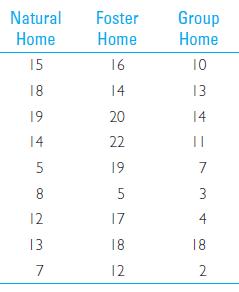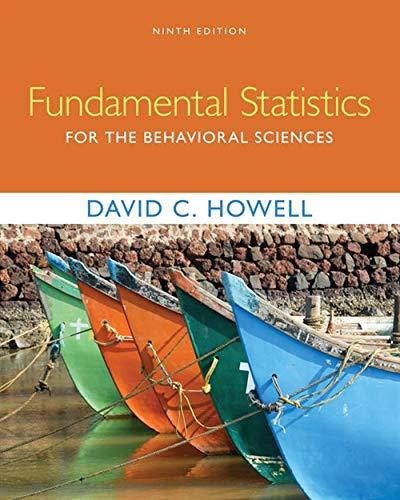What advantage does the study described in Exercise 20.14 have over the study described in Exercise 20.13?
Question:
What advantage does the study described in Exercise 20.14 have over the study described in Exercise 20.13?
I frequently ask you to use SPSS or R to solve a problem. You should have no problem with SPSS if you stick with the “Legacy” analyses. You should be able to use R by modifying the code that I give on the Web page for this chapter: http://www.uvm .edu/~dhowell/fundamentals9/Supplements/Chapter20R.html Exercise 20.14
As an alternative method of evaluating a group home, suppose we take 12 adolescents who have been declared delinquent. We take the number of days truant during each of three time periods: (1) the month before they are placed in the home, (2) the month they live in the home, and (3) the month after they leave the home. The data are as follows:
Exercise 20.13
A psychologist operating a group home for delinquent adolescents needs to show that the home is successful at reducing delinquency. He samples 10 adolescents living in their own homes who have been identified by the police as having problems, 10 similar adolescents living in foster homes, and 10 adolescents living in the group home. As an indicator variable he uses truancy (number of days truant in the past semester), which is readily obtained from school records.
Use SPSS to run the Kruskal-Wallis test on these data.
Step by Step Answer:

Fundamental Statistics For The Behavioral Sciences
ISBN: 9781305652972
9th Edition
Authors: David C. Howell





